28th Septembermarks the first anniversary of the closure of the Cononish goldmine (see here). This was they way when Scotgold announced that the vast majority of its staff were being put on short-term unpaid leave, The Loch Lomond and Trossachs National Park Authority (LLTNPA)’s mine monitoring reports, published with their usual secrecy six months in arrears, confirm that mining ceased on that date:

Under the terms of the Section 75 Agreement which were agreed for the mine unless its owners, SGZ Cononish Ltd, restart mining by Friday it will change its status and become “abandoned”. There is not a mention of this in the “update” on the Cononish goldmine contained in the LLTNPA’s Chief Executive’s report due to be considered at their meeting on Monday (see here). This post takes a look at what is going on.
A blot on the natural environment of the National Park
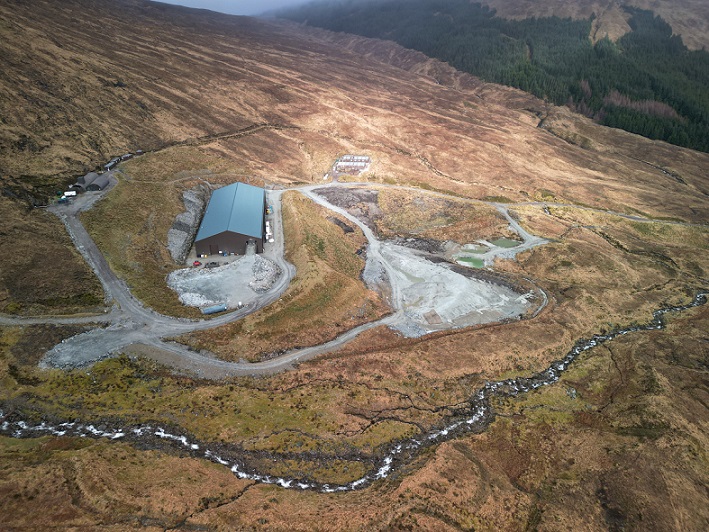
“During the construction, operational and decommissioning phases of the mine, years 1-17, this development will be contrary to the Local Development Plan as it will not safeguard, protect or enhance the Landscape, Visual Amenity, Wild Land, Special Qualities, Recreation and Access”.
Those are not my words but those of LLTNPA staff from the Committee Report which recommended approval of the goldmine in February 2018 (see here – para 6.11).
Despite the LLTNPA’s declarations that we are in a nature crisis (see here) and its claims that the restoration of nature is now key to what it does, there is no mention of the potential to restore the mne in Gordon Watson, the Park’s Chief Executive, report to the board:
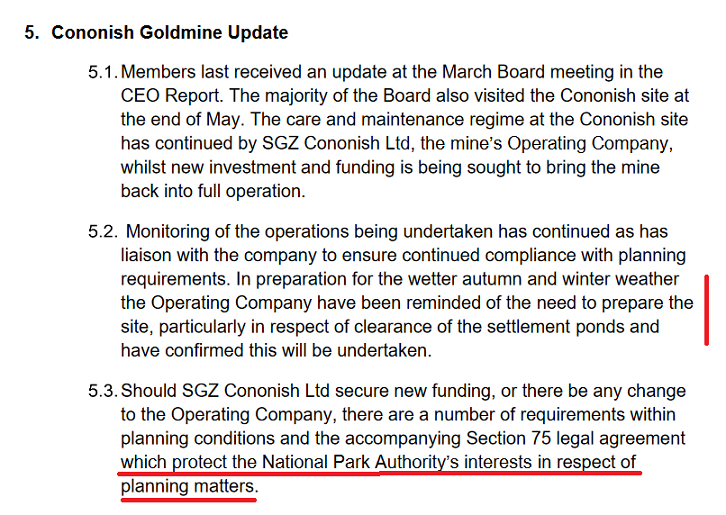
The apparently bland reporting is revealing in two respects. First, the LLTNPA’s reminder to SGZ Cononish about the need to clear the settlement ponds before winter indicates that silt is still being washed down from the mine site. That means that the pollution risk to the River Tay Special Area of Conservation continues despite the remedial measures that were put in place before the board was taken out to see the mine in May (see here).
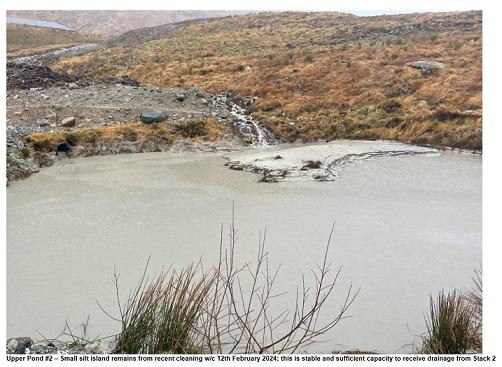
Second, the report shows the primary interest of Mr Watson and planning staff in the S75 agreement is NOT about using its provisions to restore nature but only to protect the National Park Authority’s “interests in respect of planning matters”. This appears to be a reference to the restoration bond designed to ensure SGZ Cononish paid the costs of clearing up mine site when production ceased.
The Cononish goldmine restoration bond was reviewed and increased last year but only half the amount due was piad before Scotgold went into administration last November (see here) Whether the outstanding amount has subsequently been paid by Nat Le Roux since he gained total control of the mine (see here) has never been publicly reported to the Board or in the mine monitoring reports. Whatever the case, with continued inflation in the construction industry, the need from a planning perspective to uprate the restoration bond annually should be obvious – so why did Gordon Watson not raise this in his report?
The planning provisions for the restoration of the Cononish goldmine site
Clause 1 of the consent the LLTNPA granted for the mine in February 2018 reads as follows:
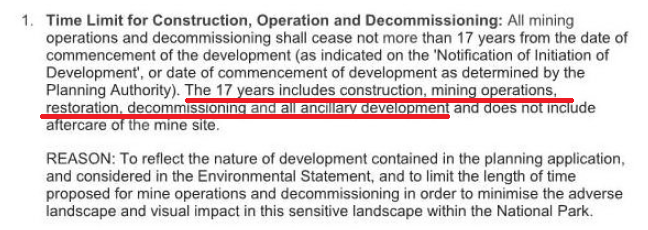
17 years was, in 2018, seen as the maximum period of time the goldmine should be allowed to operate and for the site to be restored given it was contrary to the LLTNPA’s Local Development Plan.
Clause 2 of the planning consent provides for what should happen if the mine was to close before then:
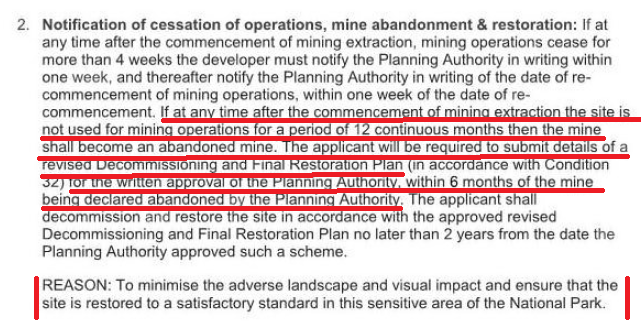
While the intention of these conditions was clearly to enable the LLTNPA to restore the mine site if it was abandoned, unfortunately they were poorly drafted. On the one hand they indicate the mine would “automatically” be classed as “abandoned” a year after mining operations have ceased – as will become the case at the end of this week. On that other they state the applicant (SGZ Cononish) would have to submit a revised “Decommissioning and Final Restoration Plan” – revised to reflect the fact that mining operations were not as extensive as originally intended – within six months of the “mine being declared abandoned by the Planning Authority”. Any actions following the mine meeting the criteria for being abandoned appear to depend on it being “declared abandoned”.
The Section 75 Agreement, which gives special legal force to these conditions, makes it clear that where the mine has been abandoned the LLTNPA “may” – not “must” – require it to cease operations permanently and trigger the release of the restoration bond to restore the site:
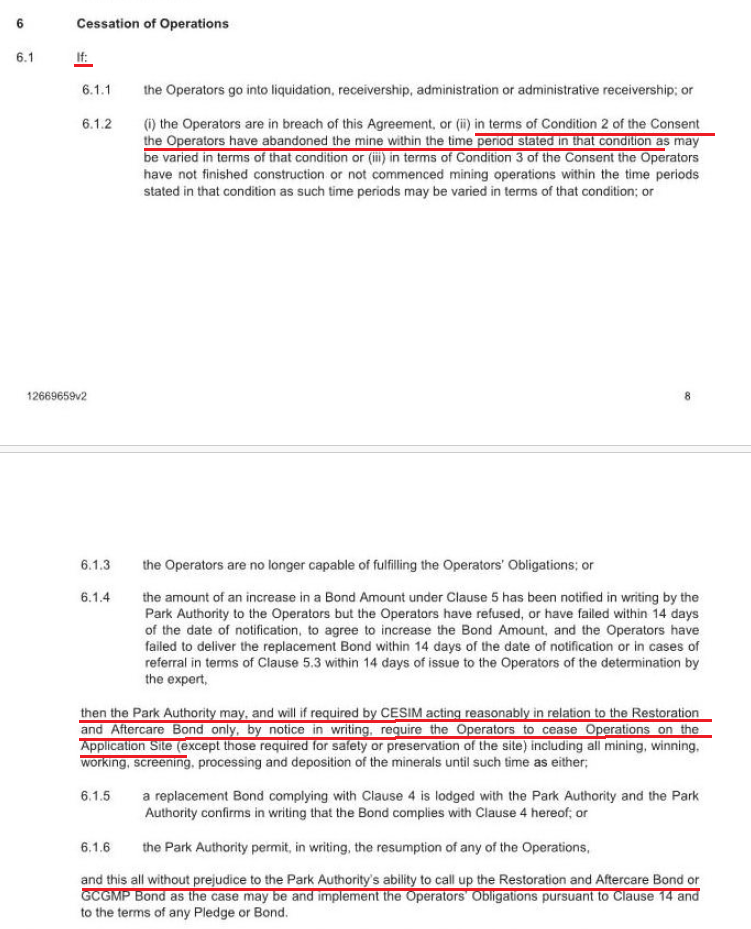
The LLTNPA board, therefore, has the discretion to decide to close the mine. It is interesting to note that should the Crown Estates {CESIM = Crown Estate Interim Management Authority) require it, the LLTNPA board would lose that discretion and coud be forced to agree to close the mine.
Perhaps the Scottish Government, which claims to care for the natural environment and the nature crisis, might now be prepared to forgo any future income from the mine (which it receives through Crown Estates Scotland) and call on the Commissioners to recognise that goldmining is not an appropriate form of development in National Parks?
The abandoned Cononish goldmine and the LLTNPA Board
So why has Gordon Watson, the LLTNPA’s CEO, failed to bring it to his board’s attention that they could declare the mine abandoned on Monday and restoring the site for nature? Part of the answer appears to be that he has information about what is happening with SGZ Cononish that he has not told the board.
While the February mine monitoring report published last month does not include any clear statement about future plans for the mine, it contains several references to the mine re-opening, for example:
“A general review of the 3 submitted but not determined Planning Applications [nothing has happened with these planning applications for over a year] to be undertaken prior to operations recommencing”.
More specifically:
“SGZ advise that future drilling will be in 4 phases some of which may be beyond the current permitted boundary (Turquoise Line), a Section 42 Planning Application to be submitted to ratify this through planning”.
Note how the assumption is that LLTNPA will nod through any increase in the underground extent of the mine. What LLTNPA staff should have taken from this is there is too little gold ore on site to make the mine, as consented, a viable business proposition and it is time to put nature, not speculative business ventures, first in the National Park.
There is a more recent indication that Nat Le Roux may have managed to raise enough money to re-open the mine. On 21st August he was re-appointed as a Director of SGZ Grampian, the former exploratory arm of Scotgold in Scotland which had also been used to finance SGZ Cononish:
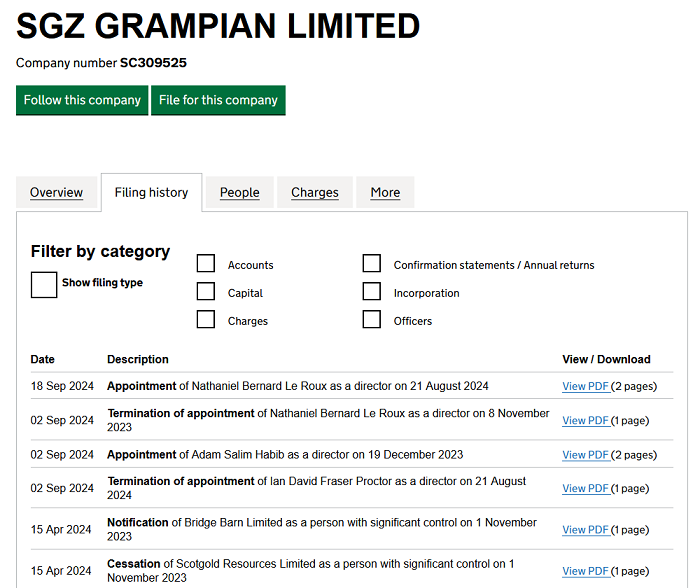
Having resigned as a Director of SGZ just before Scotgold went into administration, Mr Le Roux is now back. So why, if Mr Watson and his head of planning Stuart Mearns have indications that the mine might re-open soon, are they keeping this from the board and the public realm? And how long do they think it would be reasonable to give Mr Le Roux before they call time on the mine? and what is their justification for believing anything they might have been told given what is currently documented on companies house?
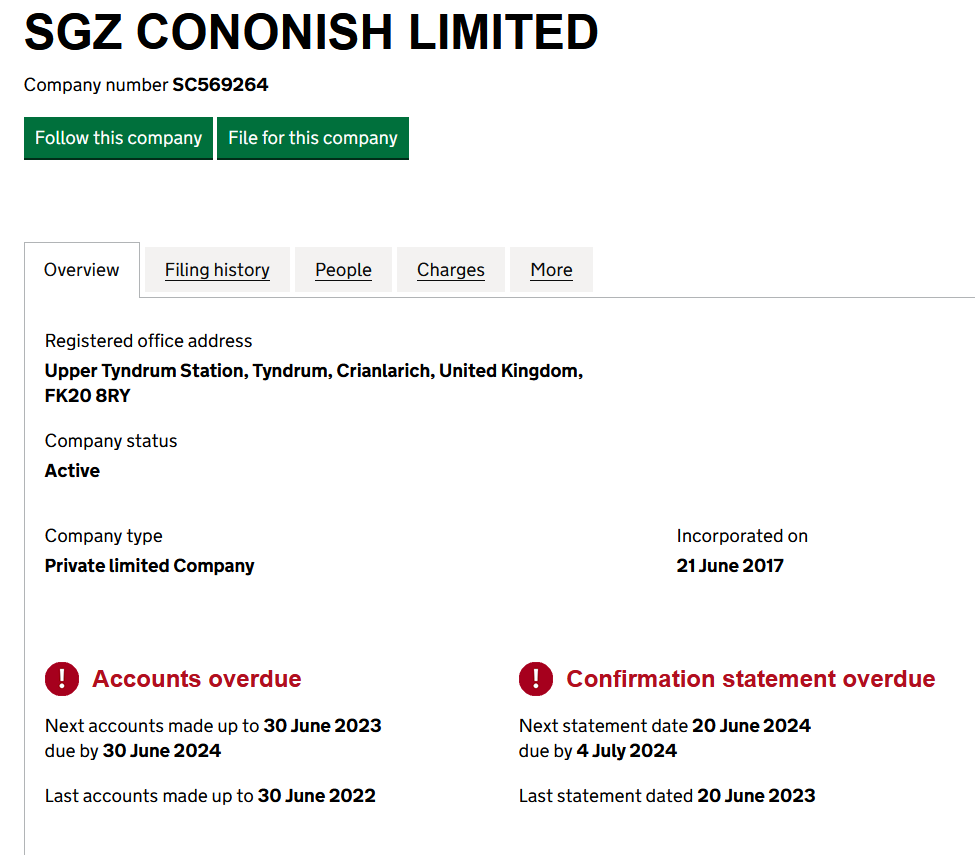
The key point here is that while there may be legitimate reasons for the LLTNPA NOT to trigger the provisions of the Section 75 agreement in respect of the abandoned gold mine it is board members, not staff, who should be deciding this and those reasons should should be recorded. The financial issues that still surround the mine give the board even more reason to put nature first.
Unfortunately, as I have argued recently in respect of the Flamingo Land planning application, it is staff not the board who are the real decision makers in the National Park. How that has happened is something the Scottish Government Minister responsible, Mairi Gougeon, needs to investigate before she creates any new National Parks.

Thank you for your comprehensive post.Complete reform of how Scottish national parks are run/ managed is urgently needed before any new national parks are proposed, local people/Communities need to have a much bigger say.Any large scale developments like gold mines should never be allowed in a national park, it makes a mockery of the whole point of having a national park,( to prevent developments like these from happening)